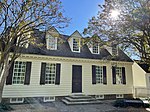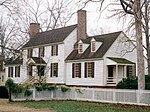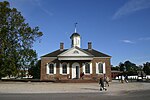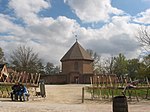Governor's Palace (Williamsburg, Virginia)
1710 establishments in VirginiaBaroque palacesColonial WilliamsburgColonial architecture in VirginiaFormer governors' mansions in the United States ... and 11 more
Government Houses of the British Empire and CommonwealthGovernor of VirginiaHistoric district contributing properties in VirginiaHistoric house museums in VirginiaHouses in Williamsburg, VirginiaMuseums in Williamsburg, VirginiaNRHP infobox with nocatNational Register of Historic Places in Williamsburg, VirginiaPalaces in the United StatesRebuilt buildings and structures in VirginiaUse mdy dates from August 2023
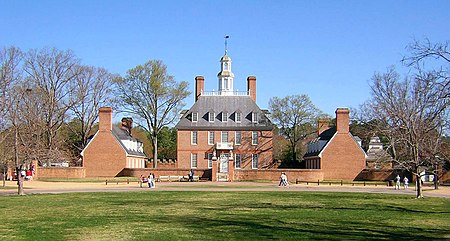
The Governor's Palace in Williamsburg, Virginia, was the official residence of the royal governors of the Colony of Virginia. It was also a home for two of Virginia's post-colonial governors, Patrick Henry and Thomas Jefferson, until the capital was moved to Richmond in 1780, and with it the governor's residence. The main house burned down in 1781, though the outbuildings survived for some time after.The Governor's Palace was reconstructed in the 1930s on its original site. It is one of the two largest buildings at Colonial Williamsburg, the other being the Capitol.
Excerpt from the Wikipedia article Governor's Palace (Williamsburg, Virginia) (License: CC BY-SA 3.0, Authors, Images).Governor's Palace (Williamsburg, Virginia)
York Street, Williamsburg
Geographical coordinates (GPS) Address Website Nearby Places Show on map
Geographical coordinates (GPS)
| Latitude | Longitude |
|---|---|
| N 37.27425 ° | E -76.702111111111 ° |
Address
Williamsburg Historic District (Colonial Williamsburg)
York Street
23185 Williamsburg
Virginia, United States
Open on Google Maps
